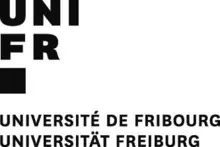Economics Terms A-Z
Econometrics
Read a summary or generate practice questions using the INOMICS AI tool
Pioneered by Ragnar Frisch, Jan Tinbergen, Lawrence Klein and Simon Kuznets, econometrics is the application of statistical models to economic data. Its aim is the quantitative analysis of economic phenomena, either theoretically or with real data. This gives empirical rigor to economics, and can possibly “prove” economic relationships or discover new ones.
Econometrics is a relatively recent revolution. In the past, economists’ ability to test economic relationships was severely limited, since they had to work by hand. Large datasets make working by hand nearly impossible, even for the most simple statistics concepts. Thankfully, the advancement of technology has allowed today’s economists to work with large datasets, complicated models, and cutting-edge statistics using software tools such as R, Python, and Stata, to name but a few.
But not every econometrician uses a dataset at all times. Theoretical econometrics is closely related to statistical theory, and studies estimators and other theoretical relationships. This is an important process that helps improve the efficiency of later economic research by discovering better statistical methods to use. Clearly then, this process of searching for better methods uses math and statistics techniques intensively.
Key to this theoretical process is the search for unbiased, efficient and consistent estimators. These qualities are desirable in statistics because they usually make an estimator suitable for inference, and so let us “prove” economic relationships via known math and statistics results.
Suggested Opportunities
- Professional Training Course, Supplementary Course, Online Course
- Posted 1 day ago
Visualizing Geospatial Data In Stata: Spatial Maps In Stata
Starts 10 Feb at TStat Training
- Summer School
- Posted 1 day ago
Oxford University Economics Summer School
Starts 7 Sep at Department of Economics, University of Oxford in Oxford, United KingdomThe applied branch of econometrics, meanwhile, uses data to describe and predict economic phenomena. An example: a bank might rely on a model using customer characteristics to predict how many customers will default on their debt. Such models are used widely in the credit industry.
To illustrate further, an econometrician can build this model using explanatory variables like age, debt to income ratio, credit rating, and employment status in a regression. Once the model is estimated, they can use statistical tests to learn about the relationships among these variables. For example, economic theory tells us that we expect rates of default to decrease if someone has a better credit rating. Through a hypothesis test, the econometrician can confirm if the data supports that theory or not.
Naturally then, econometrics is closely related to statistical inference and certain math topics (such as linear algebra). Econometricians utilize tools like regression analysis and statistical software in their work. Math and statistics knowledge is therefore extremely important for econometricians, so that they can build proper models that adequately test their hypotheses.
If the analysis is successful, an econometrician will find evidence for or against the question of interest, which is usually an economic relationship. Hopefully, the data match what economic theory would predict. In the case that it doesn’t, the econometrician may have discovered a new truth that could deepen our understanding of the real world!
Further Reading
Jeffrey M. Wooldridge’s Introductory Econometrics: A Modern Approach is a classic and widely referenced textbook that offers an introduction to econometrics. It begins by introducing the simple linear regression model, and discusses the assumptions and problems that arise with its use. Gradually, the book builds to more complicated models and situations.
For those who want to study econometrics and get a comprehensive introduction, the Wooldridge text is a good choice. However, a knowledge of statistics and math concepts like the expectation operator and probability distributions are necessary to understand econometrics. Students without this background should focus on those fundamentals first; statistics and linear algebra courses can get you up to speed.
Good to Know
Econometrics offers a promising path for a future career. Econometricians can get hired for a wide variety of roles in finance, research, government, consulting, and even data science. As there are many jobs that might require statistical techniques and an economists’ knowledge, there are even more options beyond these.
What differentiates econometricians from “regular” statisticians? The former must also be trained in economic theory. This is important so that econometricians can ensure their models make sense and produce results that are usable, rather than just leaning on data. But the fundamentals of an econometrician’s work come from statistics.
For example, an econometrician working for a government might need to conduct a statistical analysis to help design a policy. A statistician without economics training might not be able to set up the model properly or gut-check whether the regression results make economic sense. They might not be able to identify appropriate economic variables for the model, and end up with a model that doesn’t hold up under scrutiny.
-
- Assistant Professor / Lecturer Job
- Posted 6 days ago
Assistant Professor - Environmental Economics
At Ritsumeikan Asia Pacific University in Nagano, Japan
-
- PhD Program
- Posted 1 week ago
Kiel Advanced Studies Program (PhD Program)
Starts 1 Sep at Kiel Institute for the World Economy (IFW) in Kiel, Germany and Berlin, Germany
-
- Assistant Professor / Lecturer Job
- Posted 1 week ago
Clinical Assistant Professor in the Robert C. Vackar College of Business and Entrepreneurship/Economics
At University of Texas Rio Grande Valley in Edinburg, United States













